
This section comprises taped interviews with artists, architects, musicians, critics and other creative practitioners, recorded in conversation with Video Data Bank staff, colleagues from the School of the Art Institute faculty, and others knowledgeable about the particular interviewees work.
The first interview dates from 1976, the year of VDB’s official inauguration, and VDB continues to add to the collection to this day, recording and producing approximately ten new interviews a year. Many of the interviewees are guests of SAIC departments, such as the Visiting Artists program or Conversations at the Edge screening series, or invitees of the Society for Contemporary Art. The VDB interviews supplement these visits, allowing for an in-depth conversation that underlines the development of an artist's practice.
Zach Blas is an artist, writer, and filmmaker whose practice spans technical investigation, research, conceptualism, performance, and science fiction. Currently a Lecturer in the Department of Visual Cultures at Goldsmiths, University of London, Blas has exhibited internationally, including at the Walker Art Center, Gwangju Biennale, Los Angeles County Museum of Art, and Whitechapel Gallery.
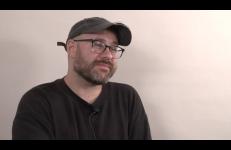
Gregg Bordowitz is a writer, AIDS activist, and film and videomaker. His work, including Fast Trip, Long Drop (1993) and Habit (2001), documents his personal experiences of testing positive and living with HIV within the context of a personal and global crisis. His writings are collected in The AIDS Crisis is Ridiculous and Other Writings:1986-2003.
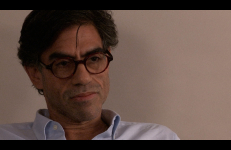
Andries Botha (b.1952) creates sculptural forms made of found objects and natural materials which serve to interrogate the natural and social order. His work has been exhibited extensively throughout Africa and Europe. Botha lives and works in Durban, KwaZulu-Natal, South Africa.
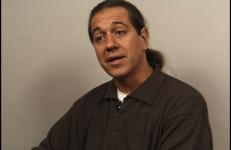
Los Angeles-based, Kaucyila Brooke (b.1952) makes what she describes as, "wall size photographic sequences in comic-strip format that consider lesbian relationships within American popular culture." Produced over the past five years, Brooke’s large-scale photo-text installations look at aspects of lesbian culture and alternative communities. Wry and often quite critical, they probe some of the ways lesbian relationships both challenge and reproduce the power relations and narratives of the wider culture.
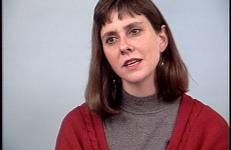
Victor Burgin (b.1941) is known as a highly influential artist and a renowned theorist of still and moving images. After 13 years in the United States, Burgin returned to live and work in his native Britain in 2001, taking up the prestigious post of Millard Professor of Fine Art at Goldsmiths College. Burgin first came to attention as a conceptual artist in the late 1960s and at that time was most noted for being a political photographer of the left, who would fuse photographs and words in the same picture.
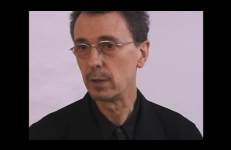
In conversation with David Getsy — an art historian focusing on queer and transgender methodologies in sculpture theory and performance history — Cassils discusses their monumental performance artworks and inspirations.
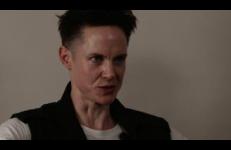
British theorist and art historian Eddie Chambers (b.1960) is a curator and a regular contributor to Art Monthly and European journals on contemporary art. His writings were collected in Run Through the Jungle (1999). Since the early 1980s he has been involved in organizing and curating a considerable number of artists' exhibitions. In addition to his exhibition work, he has written extensively about the work of artists in the United Kingdom and other countries, including Australia, Jamaica and the U.S. His articles and other texts have been widely published in magazines and journals such as Third Text, Visual Culture in Britain, International Review of African American Art, and Wasafiri.
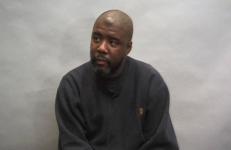
Taiwanese artist Shu Lea Cheang (b. 1954) tackles conceptions of racial assimilation in American culture, examining the political underbelly of everyday situations that affect the relationship between individuals and society.
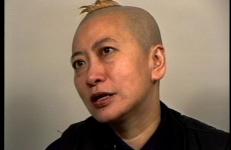
Mel Chin (b. 1951) received national attention when he had to defend the artistic merits of his work Revival Field to the NEA in 1990. The work is a public sculpture aimed at cleansing toxically polluted areas of land through the introduction of hyperaccumulators, plants that absorb heavy metals through their vascular systems. In this interview with Craig Adcock, Chin discusses the research and development that went into Revival Field, which combines such disciplines as alchemy, botany, and ecology, and the subsequent controversy that resulted from the piece.
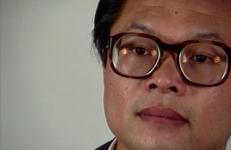
An interview that charts the activities of the Polish critic and curator Sebastian Cichocki. The dialogue is centered around, particularly, the difficulties of operating in a peripheral, Eastern European artworld context. Considerations of resources, audience and the effects of globality are foregrounded. But, despite some of the challenges this situation creates, Cichocki cites some of its advantages as well. He talks of a strong sense of community between artists, curators, critics, and journalist in his native Poland.
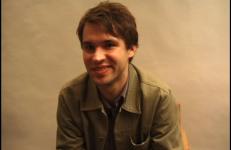
John Arthur Clark (1943-1989) was born in Yorkshire, England. He attended Hull College of Art, receiving a National Diploma in Art and Design (N.D.D.) in painting. From 1966 to 1968 he attended Indiana University, receving an M.F.A. in painting. From 1968 to 1978 he was a lecturer in Fine Art and Art History at Hull College of Art and Newcastle Polytechnic. He emigrated to Canada in 1978 and became coordinator of painting and drawing at the Nova Scotia College of Art and Design.
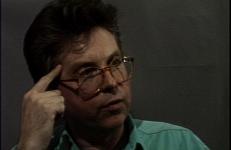
Spanish painter Chema Cobo discusses his early years of studying and creating art in Southern Spain. His career began in the mid-1970s, exhibiting at the Buades and Vandrés galleries, along with a generation of now-established artists. His work began showing outside of Spain in the ’80s. Cobo also talks about the ways that his Spanish background and identity have informed his work.
A historical interview originally recorded in 1994.
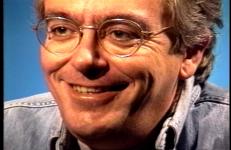
In this 2001 interview, filmmaker Jem Cohen discusses the origins of his film philosophy, and the circuitous route he has taken in his pursuit of an anti-narrative film practice outside the mainstream. Cohen sheds light on the many influences that have impacted his sentiments towards conventional film, and his desire to eschew both classical avant-garde and theatrical filmmaking in favor of a model rooted in the tradition of the 1940s New York School of street photography. Cohen also locates his aesthetic as being impacted by the 1970s hardcore and DIY scenes he was exposed to as a youth in Washington, DC.

In this 2006 interview, filmmaker Jem Cohen discusses his early interest in art, his family’s welcome antipathy towards commercialization, and his unconventional, anti-mainstream film practice. In particular, Cohen discusses his film This is a History of New York, and how this piece exemplifies his interest in the “territory of sensation” rather than simple visual descriptiveness. Cohen concludes by discussing the role of archiving in his practice, and how compulsive documentation of the quotidian and unexceptional can result in the empowerment of the everyday.

Colectivo Los Ingrávidos (Tehuacán) is a Mexican film collective founded in 2012 to dismantle the commercial and corporate audiovisual grammar and its embedded ideology. The collective is inspired by the historical avant-gardes, and their commitment to using both form and content against alienating realities. Their methods combine digital and analog mediums, interventions on archival materials, mythology, agitprop, social protests, and documentary poetry.




